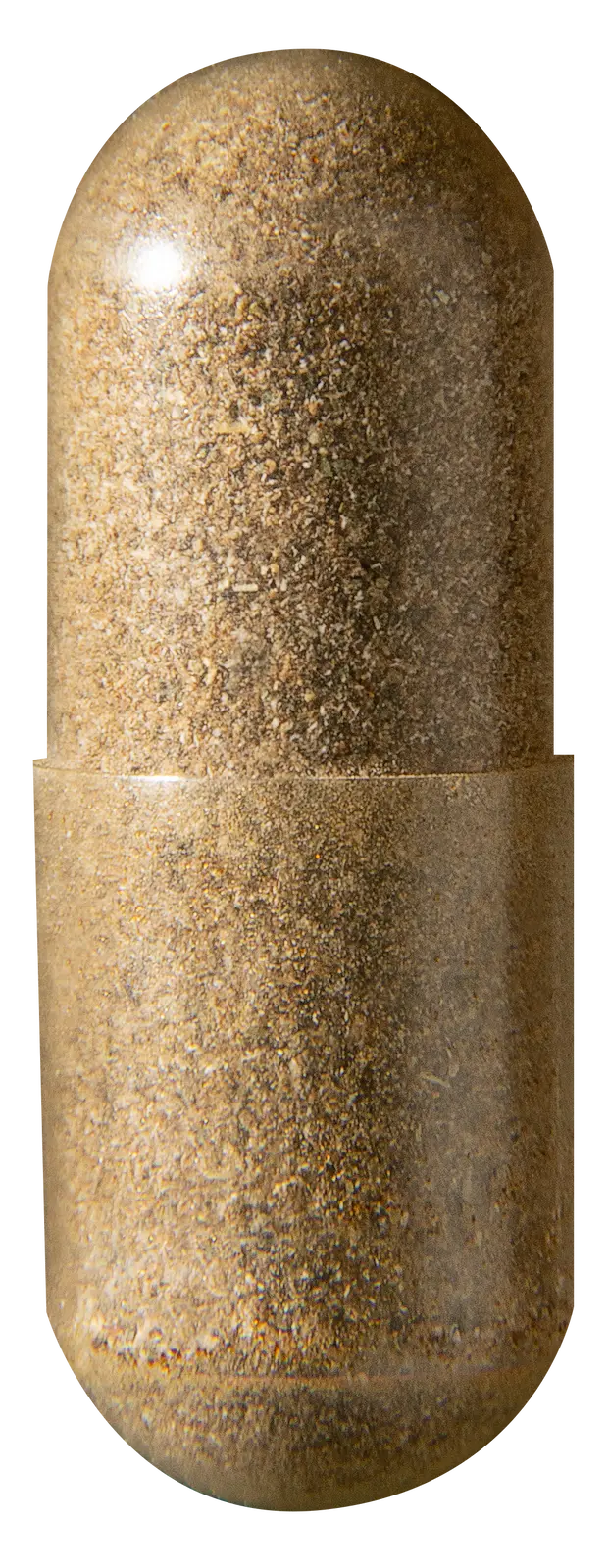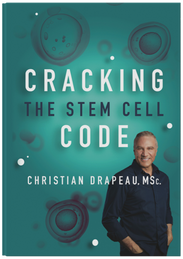Bone fracture is a relatively common occurrence with a 44% and 25% lifetime risk of fracture for women and men, respectively. While the risk can vary significantly with gender and race, the one common denominator is a gradual increase in risk with aging. While most fractures below age 40 are caused by accidents, they are predominantly caused by reduced bone density above 55 years of age.[2,3]
Bone’s Natural Repair Process
By nature, bones have a great ability to regenerate and many studies have documented how stem cells play a crucial role in bone repair. Whenever there is a bone fracture, cytokines are released by the broken bone that trigger the release of stem cells from the bone marrow. As their name implies, cytokines (“cyto” means cell, and “kine” means movement) are molecules that modulate and coordinate the movement of cells. Within 1-2 days, the number of circulating stem cells increases significantly. Within that same timeframe, the fracture site secretes locally other cytokines that attract the circulating stem cells and stimulate their migration within the fracture site. When they reach the fracture site, other cytokines and growth factors trigger the transformation of the stem cells into new blood vessels or and bone cells, promoting bone repair. While this phenomenon takes place all throughout an individual’s life, the number of stem cells in circulation decreases with age and this largely accounts for the significant decline in the ability of bones to repair in older people.[5,6]
How Stem Cells can Support Bone Repair
As soon as stem cell research emerged in the early 2000s, scientists began to look at ways of tapping into the regenerative potential of adult stem cells for bone repair, especially in older people affected by lower bone mineral density and a higher incidence of joint surgeries. Rapidly, scientist documented the crucial role played by various growth factors in attracting stem cells to the fracture site and promoting bone repair. In case of distraction fracture involving bone elongation, scaffolds were developed in which various growth factors were embedded, which resulted in significantly enhanced bone repair.[8,9]
Endogenous Stem Cell Mobilization for Bone Repair
Given the natural ability of stem cells to migrate to the site of a bone fracture, scientists also investigated the effect of simply stimulating stem cell release from the bone marrow on bone repair. These studies were first done in animals and they revealed that this simple approach was quite promising. Endogenous Stem Cell Mobilization (ESCM) significantly improved bone volume, bone density and overall bone repair.[10,11,12] One group of scientists even reported that ESCM could provide an effective alternative strategy to cell transplantation for enhancing bone regeneration.[13]
When this approach was repeated in humans, similar results were obtained.
One such study was performed with human patients undergoing complex knee surgeries. It was documented that triggering the release of the patients’ own stem cells led to significant improvement in bone repair and integration of the bone graft.[14]
ESCM and Bone Density
One aspect of bone health that has been amply documented is the significant decline in bone mineral density with age, especially in women. While many factors contribute to the decrease in bone density, such as lack of physical activity and hormonal changes following menopause, one factor that is oftentimes overlooked is the age-related decline in the number of circulating stem cells, which in turn reduces the day-to-day ability of bones to repair and maintain a healthy density.[15,16,17]
A group of scientists documented that the age-related decline in the bones’ ability to repair, at least in women, maybe linked to menopause. They documented that mice made to be menopaused not only had lower bone density, but they released much fewer stem cells in response to bone fracture, further delaying bone repair[18]. Another study on osteoporosis reported that releasing one’s own stem cells can in fact help maintain bone density.[19]
Conclusion
Stem cells play a crucial role in bone repair, regardless of the type of fracture. And like any other tissue, there is a link between the number of circulating stem cells and the ability of bones to repair. Increasing the number of circulating stem cells could also assist the body in maintaining health bone density.
Sources:
-
Residual lifetime risk of fractures in women and men.
Nguyen ND, Ahlborg HG, Center JR, Eisman JA, Nguyen TV.
J Bone Miner Res. 2007 Jun;22(6):781-8. -
The assessment of fracture risk.
Unnanuntana A, Gladnick BP, Donnelly E, Lane JM.
J Bone Joint Surg Am. 2010 Mar;92(3):743-53.
Office of the Surgeon General (US). Bone Health and Osteoporosis: A Report of the Surgeon General. Rockville (MD): Office of the Surgeon General (US); 2004. 5, The Burden of Bone Disease. Available from: https://www.ncbi.nlm.nih.gov/books/NBK45502/ -
Fracture induced mobilization and incorporation of bone marrow-derived endothelial progenitor cells for bone healing.
Matsumoto T, Mifune Y, Kawamoto A, Kuroda R, Shoji T, Iwasaki H, Suzuki T, Oyamada A, Horii M, Yokoyama A, Nishimura H, Lee SY, Miwa M, Doita M, Kurosaka M, Asahara T.
J Cell Physiol. 2008 Apr;215(1):234-42. -
Circulating plastic adherent mesenchymal stem cells in aged hip fracture patients.
Alm JJ, Koivu HM, Heino TJ, Hentunen TA, Laitinen S, Aro HT.
J Orthop Res. 2010 Dec;28(12):1634-42. -
Mobilization of endothelial progenitor cells in fracture healing and distraction osteogenesis.
Lee DY, Cho TJ, Kim JA, Lee HR, Yoo WJ, Chung CY, Choi IH.
Bone. 2008 May;42(5):932-41. -
Role of mesenchymal stem cells in bone regeneration and fracture repair: a review.
Wang X, Wang Y, Gou W, Lu Q, Peng J, Lu S.
Int Orthop. 2013 Dec;37(12):2491-8. -
Strategies to Stimulate Mobilization and Homing of Endogenous Stem and Progenitor Cells for Bone Tissue Repair.
Herrmann M, Verrier S, Alini M.
Front Bioeng Biotechnol. 2015 Jun 2;3:79. -
Adult Stem Cells for Bone Regeneration and Repair.
Iaquinta MR, Mazzoni E, Bononi I, Rotondo JC, Mazziotta C, Montesi M, Sprio S, Tampieri A, Tognon M, Martini F.
Front Cell Dev Biol. 2019 Nov 12;7:268. -
Effects of human granulocyte-colony stimulating factor on fracture healing in rats.
Bozlar M, Aslan B, Kalaci A, Baktiroglu L, Yanat AN, Tasci A.
Saudi Med J. 2005 Aug;26(8):1250-4. -
Five Days Granulocyte Colony-Stimulating Factor Treatment Increases Bone Formation and Reduces Gap Size of a Rat Segmental Bone Defect: A Pilot Study.
Herrmann M, Zeiter S, Eberli U, Hildebrand M, Camenisch K, Menzel U, Alini M, Verrier S, Stadelmann VA.
Front Bioeng Biotechnol. 2018 Feb 12;6:5. -
The effects of G-CSF and naproxen sodium on the serum TGF-beta1 level and fracture healing in rat tibias.
Kaygusuz MA, Turan CC, Aydin NE, Temel I, Firat S, Bulut T, Kuku I.
Life Sci. 2006 Dec 3;80(1):67-73. -
Mobilization of endogenous stem cell populations enhances fracture healing in a murine femoral fracture model.
Toupadakis CA, Granick JL, Sagy M, Wong A, Ghassemi E, Chung DJ, Borjesson DL, Yellowley CE.
Cytotherapy. 2013 Sep;15(9):1136-47 -
Bone marrow-derived cell mobilization by G-CSF to enhance osseointegration of bone substitute in high tibial osteotomy.
Marmotti A, Castoldi F, Rossi R, Marenco S, Risso A, Ruella M, Tron A, Borrè A, Blonna D, Tarella C.
Knee Surg Sports Traumatol Arthrosc. 2013 Jan;21(1):237-48. -
Age- and gender-related alterations of the number and clonogenic capacity of circulating CD34+ progenitor cells.
Moresi R, Tesei S, Costarelli L, Viticchi C, Stecconi R, Bernardini G, Provinciali M.
Biogerontology. 2005;6(3):185-92. -
When stem cells grow old: phenotypes and mechanisms of stem cell aging.
Schultz MB, Sinclair DA.
Development. 2016 Jan 1;143(1):3-14. -
Osteogenesis and aging: lessons from mesenchymal stem cells.
Infante A, Rodríguez CI.
Stem Cell Res Ther. 2018 Sep 26;9(1):244. -
Changes of mesenchymal stromal cells mobilization and bone turnover in an experimental bone fracture model in ovariectomized mice.
Pang J, Guo HL, Ding DF, Wu YY, Zhao YF, Gu XF, Zheng YX.
Int J Clin Exp Pathol. 2015 Sep 1;8(9):10228-38. -
AMD3100 improves ovariectomy-induced osteoporosis in mice by facilitating mobilization of hematopoietic stem/progenitor cells.
JY Im, WK Min, MH Park, NO Kim, JK Lee, HK Jin, JY Choi,
SY Kim , JS Bae.
BMB Reports 2014; 47(8): 439-444.





